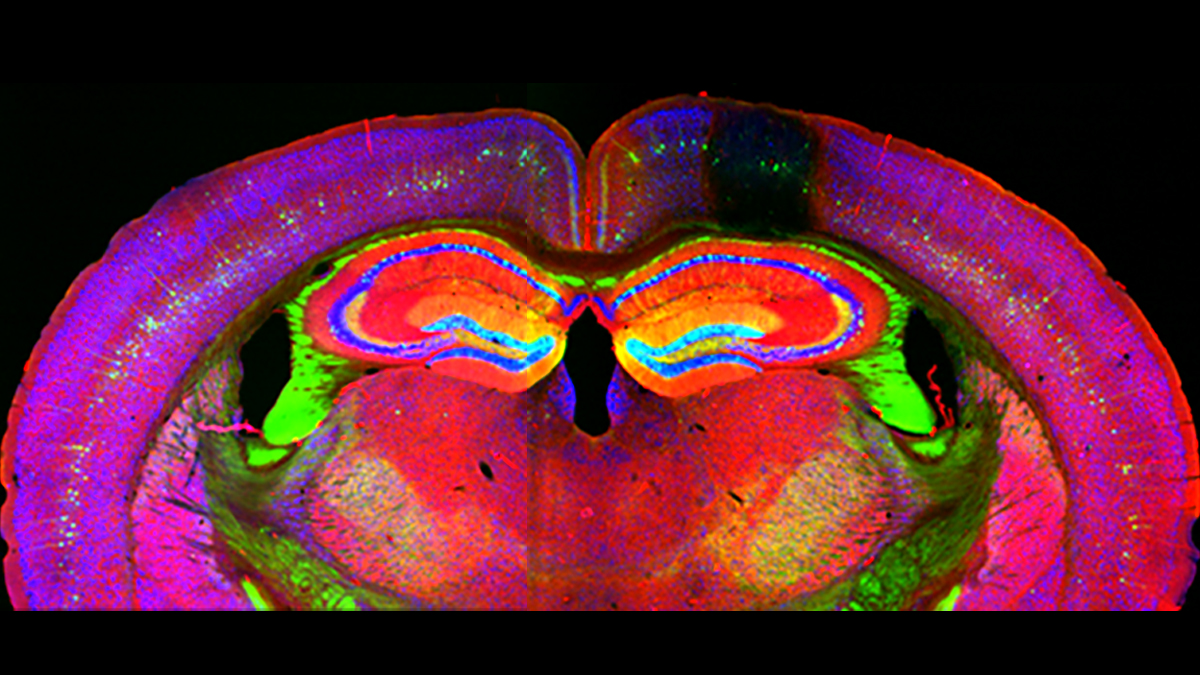UC San Diego neurobiologists studied actin filaments and discovered how their “armor” reorganizes in mouse brains using magenta-colored markers six hours after a stroke event. Credit: Halpain Lab, UC San Diego
UC San Diego neurobiologists have found that brain cells feature a remarkable ability to shield themselves in situations of severe stress, such as those suffered under stroke conditions.
Strokes or “brain attacks” occur when blood flow to the brain is restricted. Treatment efforts have largely focused on preventing the conditions that lead to strokes, such as lowering blood pressure, losing weight or quitting smoking – all of which can improve vascular health.
Far less is known about what happens at the cellular level when a stroke occurs. The new research, led by project scientist Barbara Calabrese and Shelley Halpain, professor of neurobiology in the School of Biological Sciences, found that when brain cells detect threatening conditions, they reorganize themselves into a “pro-survival” mode of protection akin to donning armor.
Using time-lapse imaging of individual neurons and other techniques to study mouse brains, the researchers traced the protective source to actin, a nimble protein involved in various functions within the cell. They discovered an extensive reorganization within the cell of filamentous actin, or F-actin, that occurs under conditions such as stroke and oxygen depletion and ultimately identified the activation of inverted formin-2 (INF2), an actin binding protein, as the key facilitator of the pro-survival reorganization response, which the researchers now call “actinification.”
“We now have a completely new understanding of how neurons protect themselves from the type of damage that they experience in a stroke—we can now capitalize on that new knowledge to try to move toward preclinical studies,” said Halpain.
— Mario Aguilera
